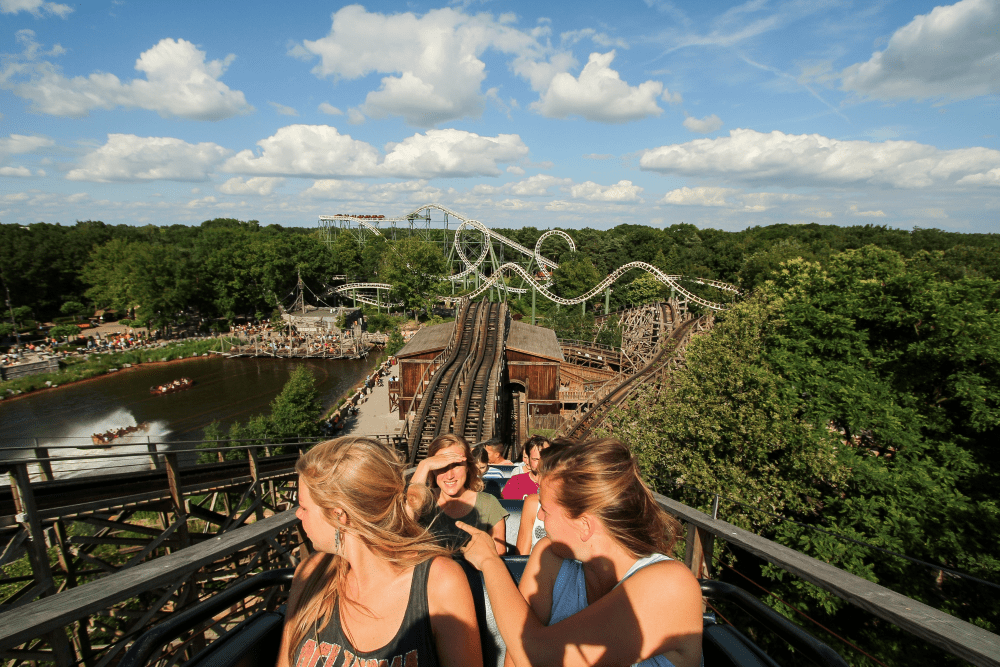Rollercoasters are a great divider. Some people crave the rush, while for others it’s a hard pass on doing a dress rehearsal of dying in a high-speed crash. Competition between theme parks has seen designs for rides go bigger, higher, and faster, but is there a limit to how big a rollercoaster can be before the feeling of danger becomes real, fatal danger?
Height alone isn’t enough to make a rollercoaster dangerous. Everything from speed to track layout and rider restraints can contribute towards dangerous riding conditions. However, height is one of the most significant as the higher you go, the more extreme forces become.
One of those is gravitational force, also known as G-force, which is the measure of what you experience when you accelerate at great speed. It’s of particular significance to astronauts and Formula One drivers who experience extreme G-force as part of their zoom, rocket-riding jobs.
On a rollercoaster you can experience positive and negative G-force, by which we don’t mean “fun” and “unpleasant”. A positive G-force is what you’re feeling when a ride speeds up and pushes you back in your seat. A negative G-force is what’s happening when you feel as if you’re being pulled out of your seat.
The strength of that force is largely dependent on height, as the farther you fall the faster you’ll go. The same is true of steepness, as vertical drops will exert greater forces compared to sloped ones.

Loop-de-loops can actually help offset some of the G-force brought on by extreme drops and speed.
Image credit: Alexandre G. ROSA / Shutterstock.com
Changes in G-force can be fun for thrill seekers, but take it too far and you’ll have people blacking out and getting injuries. The fun zone for G-force is around two to five Gs, but it’s been estimated you could survive a few seconds at nine Gs in a bind.
To put that in context, Scientific American says that an acceleration of nine Gs would make your body feel nine times heavier. This would cause your blood to shoot to your feet, also making it heavier so that your heart’s strength is no longer sufficient to pump it up to the brain. If things don’t slow down sharpish you’ll black out and die.
It would be possible to make a rollercoaster that can surpass human tolerance for G-force; we already have planes that can go above and beyond it, but they’re used within safe limits because – understandably – the pilots want to live.
The idea of a killer coaster is something that was actually put forward by PhD student at the Royal College of Art and former amusement park employee, Julijonas Urbonas, who designed a “Euthanasia Coaster“. The idea effectively played with G-force to push blood away from where it was needed, causing euphoria before loss of consciousness and ultimately death.
A pretty litigation-free business endeavor given dying is the whole point, but what if you want a mega thrill that let’s you walk away in good health after? How far can you push it?
Kingda Ka is the tallest rollercoaster on Earth, just surpassing the Great Pyramid of Giza at 139 meters (456 feet). In an eye-opening video, Business Explainer broke down what would happen if you were to push that to a dizzying 800 meters (2,624 feet) to match the height of the Burj Khalifa, and the results were not good.
At that height you’re likely reaching speeds of around 370 kilometers per hour, putting you at risk of eye damage from random debris and possible death from goose to the face. If you’re doubting if a bird to the face could cause that much damage, here’s what Fabio Lanzoni looked like after hitting a goose while riding Apollo’s Chariot at Busch Gardens Williamsburg.
Apollo’s Chariot reaches maximum speeds of 117 kilometers per hour (73 miles per hour), so were you to scale up to our imaginary Burj Khalifa coaster you can appreciate how the incident would likely have killed both parties.
Goggles protect the eyes of riders on Formula Rossa, considered the fasted rollercoaster in the world at 240 kilometers per hour (149 miles per hour). You’d need a helmet to protect against bird strikes, but then you’re looking at entirely new hazards as the weight of it would affect the G-force you feel.
The solution is to slow things down with some loop-de-loops, which lends itself better to more elaborate tracks that focus on speed over dizzying heights. So, as for how tall you can go before people start dying, it seems like we’re already dancing with the limits over on Kingda Ka and Formula Rossa. While someone may well build a rollercoaster that just tops 139 meters, your best bet for extreme Gs way up in the sky is probably to become an astronaut.
Bon voyage!
Source Link: How Extreme Rollercoasters Can Get Is Dictated By G-Force And Geese